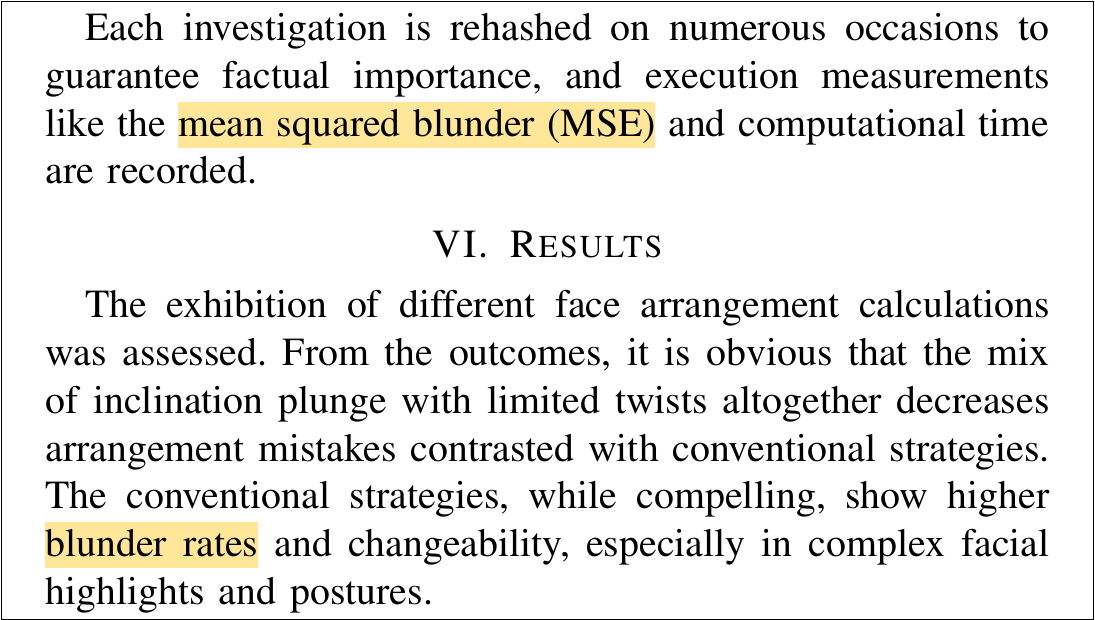Science
Related: About this forum'Squared blunder': Google engineer withdraws preprint after getting called out for using AI
https://retractionwatch.com/2025/04/24/google-ai-engineer-withdraws-arxiv-preprint-tortured-phrases-genai/
Two of the phrases in the paper identified as AI-generated
Extraction Watch is a good site to follow (I prefer RSS). Some of the rank foolishness exposed is amazing - and perhaps terrifying, as these published documents get picked up and cited elsewhere.
The paper, “Leveraging GANs For Active Appearance Models Optimized Model Fitting,” appeared on arXiv.org in January but was withdrawn April 7. The author, Anurag Awasthi, is an engineering lead in AI infrastructure at Google. In a PubPeer comment, he described the paper as a “personal learning exercise.”
In March 2025, sleuth Guillaume Cabanac, creator of the Problematic Paper Screener, pointed out in a PubPeer comment the paper included several tortured phrases. These phrases indicate AI use and occur when large language models try to find synonyms for common phrases. In Awasthi’s paper, “linear regression” became “straight relapse,” and “error rate” became “blunder rate,” among others.
Awasthi replied to the comment saying “phrasing issues were unintentional artifacts from an earlier revision where automated tools were used to rephrase for variety.”
. . .
xocetaceans
(4,314 posts)It would be interesting to see if any of his plots sport "blunder bars"...
Upon looking (in a very cursory manner...still seemingly more deeply than Awasthi did) at Awasthi's paper to see about the much-hoped presence of "blunder bars", another humorous contribution to the paper's (seemingly high) "blunder rate" is the citation in this shortly following passage. (Someone should let the unfortunate Simon Baker know that apparently he is to be cited in the literature as "Bread Cook".)
Models Optimized Model Fitting
Anurag Awasthi
Google, USA
anuragaw@google.com
...
Fitting AAMs includes taking care of a non-straight [sic: nonlinear?] opti-
mization issue, where the objective is to limit (or expand) a
worldwide mistake [sic: global error?] (or closeness) measure between the infor-
mation picture and the underlying model occurrence.
...
Enhancement-based techniques, presented by Matthews and
Bread Cook [2], utilize Compositional Angle Drop (CGD)
calculations to scientifically limit the blunder measure.
...
REFERENCES
...
[2] I. Matthews and S. Baker, “Active appearance mod-
els revisited,” International Journal of Computer Vision
(IJCV), 2004.
...
https://arxiv.org/pdf/2501.11218v1
Does this count as (smart-)phoning in one's research? The AI-generated text is so glaringly bad that it seems unlikely that one could read it while being conversant with the technical jargon of the field and come away with anything other than the idea that such a paper is not even close to being publishable, even as a preprint. As noted above, citing a man named Baker as Bread Cook is purely risible.
Lastly, the commentary on PubPeer is very interesting to read:
erronis
(22,195 posts)Of course crap like this has existed ever since we were copying texts on papyrus or clay tablets. But since it can now be automated the crap has expanded billions of time (cite?).
I did enjoy looking at the pubpeer paper you listed. If I had known that "linear regression" was just a "relapse technique" I probably could have aced my stats classes.
xocetaceans
(4,314 posts)The following is still from the first page of the paper:
II. ACTIVE APPEARANCE MODELS
Dynamic Appearance Models (AAMs) [1, 2] are generative
parametric models intended to catch varieties in shape and
appearance for a particular class of items. AAMs are built
utilizing a bunch of pictures where the spatial places of
important milestones, xi = (xi, yi)T ∈ R2, are characterized
to address the item’s shape. These tourist spots are explained
physically ahead of time.
...
https://arxiv.org/pdf/2501.11218v1
Clearly, the AI has substituted "dynamic" for "active", and it also seems that "catch" is substituted for "detect", "varieties" for "changes", and "pictures" for "images".
The phrase "the spatial places of important milestones" might be something like "locations of waypoints(?)", but it is hard to know.
That phrase "the spatial places of important milestones" seems to correlate with the phrase "these tourist spots" in the final quoted sentence above. I am guessing "are explained physically ahead of time" might make the last sentence a twisted version of "These locations/waypoints are predetermined.".
But I (oh so sarcastically) say, "What unnamed person has cognizable epistemic epiphanies along this ground-based trajectory?"
highplainsdem
(59,208 posts)it would take years to get rid of all the AI slop - text, images, video and music - that's enshittifying the internet.